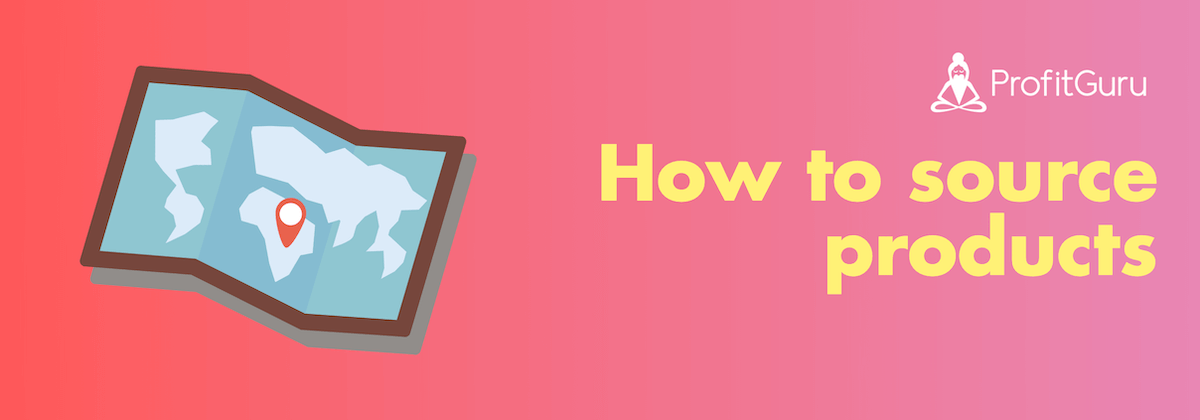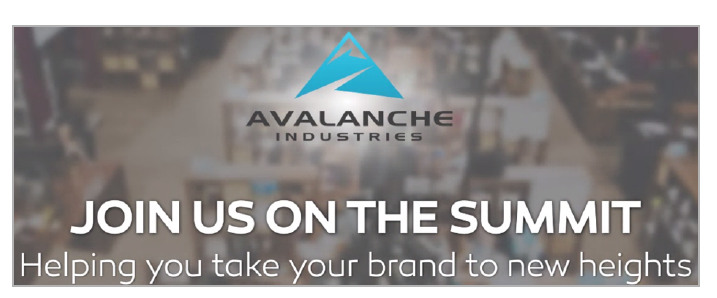4 Advanced Strategies for Sourcing Amazon Products

Trifon Tsevtkov
May 20, 2019

As we’ve said before, the best products are often the hardest to source.
This reduces competition as fewer Amazon sellers are willing to go the extra mile needed to source them.
We hope you understand this and you’re up for the challenge. If you take the time and effort to source good products, you’re seriously boosting your chances of taking your business to the next level.
In this article, we’ll talk about 3 ways to get access to some of the best and most profitable products to sell on Amazon.
First, we’ll talk about ungating and how you can get the opportunity to sell products for which Amazon has certain restrictions.
Next, we’ll cover what you can do to partner with suppliers who offer great products but are (at first) unwilling to supply them to you. Whether it’s the brand owner or a high-tier wholesaler.
Namely, we’ll look at strategies to offer high value to suppliers in exchange for their collaboration.
By the end of this post, you’ll have the knowledge to source some of the best products to sell on Amazon.
Ready? Let’s go.
1. Ungating
When deciding on which products to sell on Amazon, you should be aware that you are not allowed to sell in some categories because they are gated.
Gated, in Amazon talk, basically means that they are restricted and if you want to sell in these categories, you will need to obtain approval from Amazon to do so.
You may think that there is no point in trying to gain access to gated categories because there are plenty of opportunities elsewhere. Whilst that is true to some extent, gaining access to gated categories should always be your aim.

If "Sell this product" button is not available in seller central, it means product is gated
One of the main benefits for selling in the gated categories is that there will be less competition because many sellers will not go to the lengths which are required to become ungated.
It can sometimes get a little frustrating when you find a product which ticks all the boxes in terms of profit potential for selling on Amazon and then you discover that it falls in a gated category. But don't worry - there are lots of great products for you to sell in ungated categories whilst you are waiting for approval and allowing for your account to mature.
To begin with, here’s the list of the ungated categories.
Ungated categories
-
Baby (some restrictions may apply during the holiday season).
-
Beauty (There are sub-categories that may still require approval, and an application fee).
-
New & Used Books (not including Collectible Books).
-
Camera & Photo.
-
Consumer Electronics (some products within this category may need approval).
-
Fine Art (but new seller applications are limited).
-
Health & Personal Care (There are sub-categories that may still require approval and an application fee).
-
Home & Garden.
-
Kindle Accessories.
-
Musical Instruments.
-
Office Products.
-
Outdoors.
-
Personal Computers.
-
Pet Supplies.
-
Software (some products within this category may need approval).
-
Sports.
-
Tools & Home Improvement.
-
Toys (some restrictions may apply during the holiday season).
-
Video Games (some products within this category may need approval).
You can see that there are plenty of categories on the list above which offer lucrative opportunities and perhaps one of the most surprising inclusions is that of Toys.
Most people think that Toys would fall into a gated category which it does - but only in the 4th quarter and only then if the product is being merchant fulfilled (FBM).
So, if you are using the FBA program, selling toys is not a problem. You will be able to do so throughout the year which is another excellent reason to join the FBA program.
Ok, we have looked at the categories which you can sell. Now, let’s look at the categories which are gated, and for which you have to apply to Amazon for approval to sell in there.
List of gated categories.
Gated categories
-
Automotive & Powersports.
-
Clothing & Accessories.
-
Collectible Books.
-
Entertainment Collectibles.
-
Gift Cards.
-
Grocery & Gourmet Foods.
-
Industrial & Scientific (the BISS category).
-
Jewelry (Note: Amazon is not currently accepting new seller applications for jewelry).
-
Luggage & Travel Accessories.
-
Major Appliances.
-
Shoes, Handbags & Sunglasses.
-
Sports Collectibles.
-
Watches.
If you are asking yourself why Amazon considers these categories as gated, it is because there can be high instances of counterfeiting within these categories and Amazon needs to reduce their risk.
Think about it - fake watches, handbags, and sunglasses seem to be everywhere you look in this day and age. The last thing Amazon wants is for these goods to be sold on their platform.
There are also some restrictions within certain categories that you need to be aware of.
Certain brands will have come to an arrangement with Amazon to have their brand protected, and you will have to get permission from the brand itself to sell their products as opposed to getting permission from Amazon.
If there’s one thing to take away here, it’s this: there’s a lot of sense in going through the approval process and sell into a gated category. This will open opportunities for you to generate higher profits and compete with fewer sellers.
Please note: The categories listed above are correct as of writing this article. However, Amazon can change them at any point without notice. To get the most up-to-date information, visit Amazon’s official page for restricted products.
Now, on to our next strategy for sourcing great Amazon products.
2. Developing a new value proposition to go up in the supply chain
Many people will jump straight into Amazon sales without laying the foundations and wonder why problems arise further down the line. But if you take your time and allow your account to mature, the rewards will be there for you to reap.
If you would like to take your Amazon business to the next level though, it is important that we take time to look at what is known as the value proposition.
Make no mistake, the methods that we are about to talk about will require a lot of time and effort, especially if you are starting your Amazon store from nothing. But also - the rewards can be immense and when you look back they are more than worth the extra work that you will have to put in.
The whole point of the value proposition is to work your way up the supply chain so that you can sell the type of products which are not accessible to the vast majority of Amazon sellers.
We have spoken about how to get the best deals from wholesale sources and using tools such as ProfitGuru to find those with the best profit potential. But as you will learn, there are methods which you can use which can give you the opportunity of working with top quality brands who will almost always say no to any requests to sell their products on Amazon.
Before we go any further, it is important that you understand that most good brands are not at all interested in landing new Amazon sellers.
Think about it.
All good brands will already be selling their products on Amazon and any new sellers will just be competing with everyone else to win the Buy Box.
As long as the existing sellers are keeping an eye on their stock levels and always have inventory to fulfill the orders, they will keep the Buy Box and the number of sales will stay the same.
What can happen if a brand allows too many sellers to sell their products is that people start to get desperate and lower their prices, even though this will go against the brand's MAP (minimum advertised price) policies.
These lower advertised prices can not only severely damage the brand's reputation but can turn into an administrative nightmare in actually trying to trace the sellers. It is not difficult to realize that, from the brand's point of view, it is far better to just have a few reliable sellers who know what they are doing as opposed to many that they cannot control.
If you are interested in working with reputable brands and enjoying the rewards which can go hand in hand with these relationships, this is where the value proposition comes in. So let’s take a deeper look into what is involved.
Before you even think about approaching brands and asking for permission to sell their products, you need to look at the approach from a different angle. Thinking “outside the box” would perhaps be a better way of describing it.
Start to think of different ways in which you can reframe your approach to the brand owner and what kind of unique value you can offer them instead of “Can I sell your products, please?”.
The easiest way to come up with a value proposition is to look at what problems the brand owner may be experiencing with their selling process and offer them solutions. Let’s take a closer look at some potential problems which you could offer solutions to:
Offer solutions to problems
A product detail page with poor photographs and a description which does not do the product justice.
Offer a service whereby you totally rewrite the description and include high-quality product photographs.
Poor market share when compared to product competitors?
Offer to carry out keyword research as well as setting up PPC campaigns.
Sellers paying no attention to MAP policies so that the selling price is all over the place?
Provide a monitoring service to ensure that MAP policies are being met.
The brand owner may have a website which leaves a lot to be desired?
Offer to provide them with a fully functional website which will go a long way in conveying the quality of the brand.
If you take the time to go through a brand owner’s Amazon descriptions and their website, you will come across many opportunities in which you can present to them a value proposition.
If you are thinking that this looks like too much work, would it give you any encouragement to tell you that we make $20k profit per month from one great supplier we presented a value proposition to, just like the examples we have just spoken about?
Before you start approaching brand owners in order to offer solutions to their problems, it is important that you set yourself up in a professional manner. A company email address along with a website which describes the services that you offer are a must.
It would be a big mistake to think that these steps are not necessary.
If you were the brand owner, which would you take more seriously - an email from [email protected] or [email protected]?
A domain name can be purchased for under $10 and if building a website is beyond your capabilities, take a look on upwork.com or fiverr.com where you can get one built for under $200.
Keep the content on your website simple and easy to understand. Describe the kind of services which you are able to offer and don't think that you have to cover absolutely everything.
It could be that you offer to provide managed PPC campaigns to promote Amazon listings and if that is the case and it is something that you are comfortable with, there is no need to also offer a website building service and a photography service, etc.
As already mentioned, most people will not be prepared to go the extra mile and the very fact that you are could make the brand owner sit up and take notice.
Here is the website of one of the biggest Amazon sellers - http://www.avalancheind.com/. You can see that their business is based on offering a value proposition. Look at their subheading: “Helping you take your brand to new heights”:
They offer copywriting, videography, marketing and photography services and are a perfect example of asking what they can do for a brand owner instead of just asking if they can sell their products.
Also, don't forget that you don't have to provide these services yourself. If you have the funds available, it is possible to outsource these tasks just as you would have done with your website if you don't know how to build one yourself.
3. Building credibility in a small niche
This method is still based on offering a value proposition but in a completely different way.
The way it works is that you build a presence within a small niche and become known as something of an authority in it.
Set up a blog and social media accounts which are regularly updated and collect email addresses from visitors to your blog. You have probably read about successful bloggers being continually sent products from companies within their niche so that they can give them
favorable reviews to their social media following.
This method is exactly the same and if you were a brand owner, don't you think you might be impressed if you received the following email:
“I am an Amazon seller and would be interested in selling your product range on Amazon. I have a proposition for you which I am sure will interest you. I am regarded as an authority in (your niche) and if you agree to allow me to sell your product range on Amazon, I will be able to promote your products to my email list of 5000 subscribers, 6000 Twitter followers, and 7000 Instagram followers. From my experience, I know that my audience will love your products and due to the nature of the product range, I would have thought that they will become repeat buyers.”
The value proposition in this instance is that you are in a position to drive highly targeted traffic to the products which you have listed on Amazon and this has to be regarded as a win-win situation for the brand owner.
As to which niche to choose, it is advisable to go with something that you have an interest in, and obviously one in which there are popular brands which relate to your niche.
4. The brick and mortar solution
Another method for working your way up the supply chain is to make an offer to sell a supplier’s products through a physical store.
Great suppliers are always on the lookout for additional sales channels. Although they are often reluctant to sell their products on Amazon, they will gladly accept if you have a bricks and mortar store.
Even if your premises are completely unrelated to retail, a barbershop or nail salon, for instance, it could give you an opening to sell the products and then be allowed to sell the products on Amazon.
Again, it may sound a lot of extra work, especially if you don’t already have access to bricks and mortar stores. But from our experience, if you can get permission from a brand owner to sell their products, the resulting profits will mean that the time and effort spent on setting it all up was worth it.
If you don't have your own premises and are not really interested in doing so, another option could be to come to an arrangement with a friend or relative. Ask them to buy the products for you and resell (wholesale) at no extra cost. Of course, it’s a hassle to have other people to get involved but might be worth the effort for some great brands.
Conclusion
In this post, we looked at some of the best ways to source Amazon products.
We discussed ungating and what you can gain from it.
We also looked at strategies for helping brands and building a good relationship with them. These involved building a value proposition from scratch such as improving the brand’s product descriptions or photography.
Other ways to move up the supply chain include building credibility in a small niche and offering to sell the brand’s products through a physical store. Both of these give the brand owner access to more sales channels that boost their overall performance.
We hope this article will help you source your next winning products in no time. You can also learn more in our dedicated article on choosing great products for your Amazon store.
Need more guidance? Sign up for our free course on building an Amazon store from scratch for beginners.
On this page
The Free Email Course to KickStart Your Amazon Journey
Getting from an idea to your first few sales in 7 days


